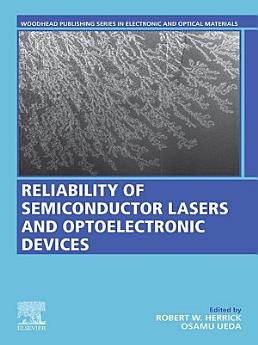Reliability of Semiconductor Lasers and Optoelectronic Devices
About this ebook
About the author
Dr. Robert W. Herrick is one of the world’s leading authorities in semiconductor laser reliability and failure analysis with over 25 years of experience in this field. After receiving his MSEE from the University of Illinois, United States, he worked as a designer and process developer on many of the earliest record-breaking integrated photonics devices in the late 1980s and early 1990s. He did his PhD research at the University of California, Santa Barbara, United States in the mid-1990s, doing the first research on VCSEL reliability and failure analysis. After graduating, he worked for many of the largest optoelectronic transceiver providers, including HP/Agilent, EMCORE, Finisar, and JDSU, primarily in VCSEL reliability and failure analysis, but also in roles in fiber optic transceiver reliability. He now works for Intel’s Silicon Photonics Product Division and is the Principal Engineer responsible for laser reliability.
Dr. and Prof. Osamu Ueda received BS and PhD degrees from the University of Tokyo, Japan, in 1974 and 1990, respectively. He joined Fujitsu Laboratories Ltd. in 1974. Since then, his research has been focused on the evaluation of defects and microstructures in various semiconducting materials and degradation mechanism of compound semiconductor optical devices such as semiconductor lasers and LEDs for over 30 years. The key technique of his work is transmission electron microscopy for the characterization of defects in semiconductors and degraded optical devices. He left Fujitsu Laboratories Ltd. in 2005 and joined the Kanazawa Institute of Technology, Tokyo, Japan as a professor until 2019. He is currently a visiting professor at the Meiji University, Tokyo, Japan. He authored more than 150 scientific papers including 30 invited papers, 5 books, and 56 patents.




